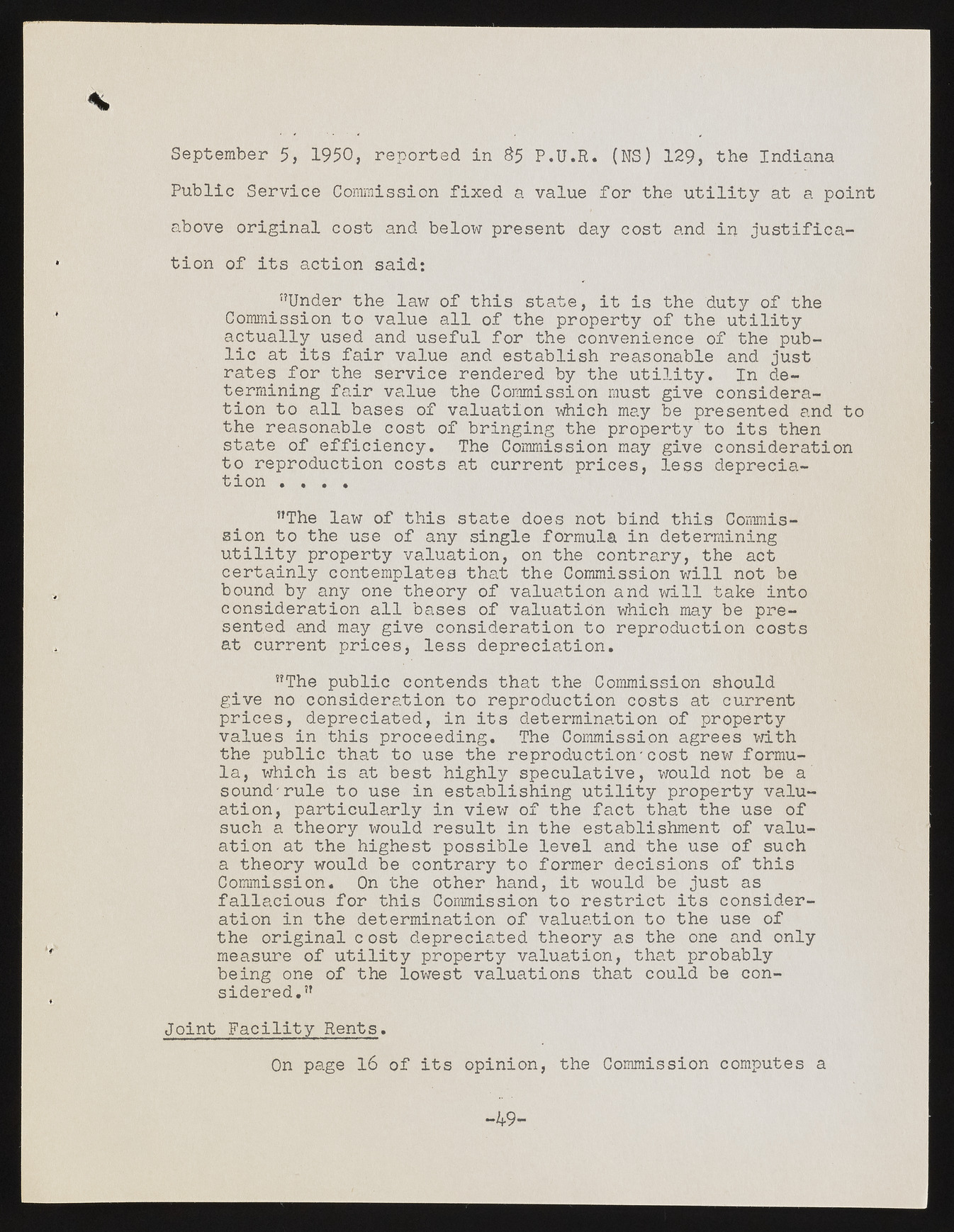Copyright & Fair-use Agreement
UNLV Special Collections provides copies of materials to facilitate private study, scholarship, or research. Material not in the public domain may be used according to fair use of copyrighted materials as defined by copyright law. Please cite us.
Please note that UNLV may not own the copyright to these materials and cannot provide permission to publish or distribute materials when UNLV is not the copyright holder. The user is solely responsible for determining the copyright status of materials and obtaining permission to use material from the copyright holder and for determining whether any permissions relating to any other rights are necessary for the intended use, and for obtaining all required permissions beyond that allowed by fair use.
Read more about our reproduction and use policy.
I agree.Information
Digital ID
Permalink
Details
More Info
Rights
Digital Provenance
Publisher
Transcription
September 5, 1950, reported in $5 P.U.R. (NS) 129, the Indiana Public Service Commission fixed a value for the utility at a point above original cost and below present day cost and in justification of its action said: "Under the law of this state, it Commission to value all of the proper tyi s oft het hed uuttyi loift ythe alcict uaatl lyi tsu sefdai ra nvda luusee fualn d foers tathbel ischo nvreeansioennacbel eo f anthde jpusutbtraetremsi nifnorg fthaei r svearlvuiec e trhee ndCeormemdi ssbyi onth em usutt ilgiitvye. coInns iddeeration to all bases of valuation which may be presented and to the reasonable cost of bringing the property to its then state of efficiency. The Commission may give consideration ttoi onr ep.r.od.uc.tion costs at current prices, less depreciasion t"oT het hel auws eo f oft hiasn y stsaitneg led ofeso rmnuotl a biinn d detthiesr miCnoimnmgisutility property valuation, on the contrary, the act certainly contemplates that the Commission will not be bound by any one theory of valuation and will take into csoennsteidd eranadt imoany algli veb asceosn siofd evraaltuiaotni oton rwehpicrho dmuacyt iboen pcorsets at current prices, less depreciation. "The public contends that the Commission should give no consideration to reproduction costs at current prices, depreciated, in its determination of property vtahel uepsu bliinc tthhisa t prtooc euesdei ntgh.e reTpher odCuocmtmiiosns'icoons ta grneeews fwoirtmhu la, which is at best highly speculative, would not be a astoiuonnd,' ruplaer ttioc uulsaer lyi n ine svtiaeblwi sohf itnhge utfiaclti tyt haptr otpheer tuys ev alofuastuicohn a att htehoer yh iwgohuelsdt rpeossulsti blien tlheev ele satnadb ltihseh muesnet ooff vsuaclhua theory would be contrary to former decisions of this Commission. On the other hand, it would be just as faatliolna ciion utsh ef ord ettheirsm inCaotmimoins sioofn vtaol uraetsitorni ctto tihtes cusoen siofderthe original c ost depreciated theory as the one and only measure of utility property valuation, that probably bseiidnerge do.n"e of the lowest valuations that could be conJoint Facility Rents. On page 16 of its opinion, the Commission computes a

